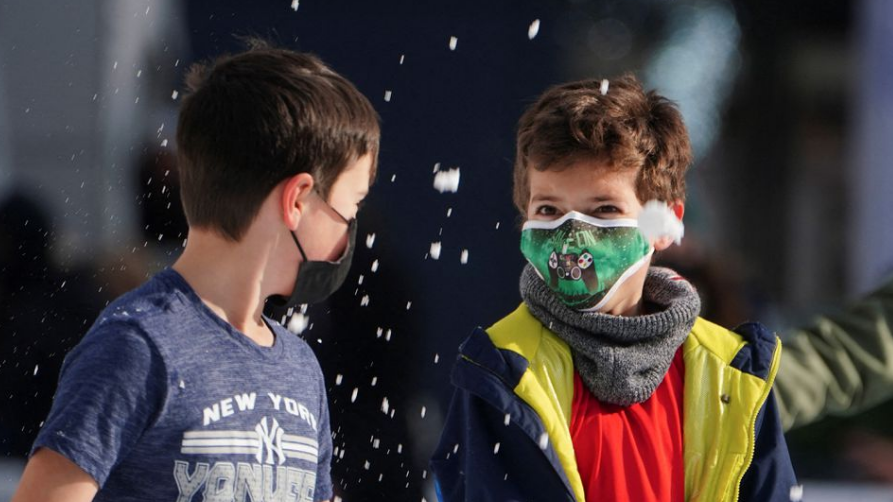
Children wearing protective masks toss snow at each other as they skate at Bryant Park during the COVID-19 pandemic, New York City, New York, U.S., January 14, 2022. /Reuters
The Omicron variant may be more efficient at infecting children through the nose than previous versions of the coronavirus, a study suggests.
Earlier in the pandemic, children's noses had been less welcoming to the virus that causes COVID-19 than adults' noses. Studies of the original SARS-CoV-2 and some of its variants found the virus was met with stronger immune responses in the cells lining young noses than in adults' nasal-lining cells, and it was less efficient at making copies of itself in children's noses.
But recent test-tube experiments mixing the virus with nasal cells from 23 healthy children and 15 healthy adults found the antiviral defenses in kids' noses were "markedly less pronounced in the case of Omicron," researchers said in a peer-reviewed study published on PLOS Biology on Monday. They also reported that Omicron reproduced itself more efficiently in children's nasal-lining cells compared to both Delta and the original virus.
"These data are consistent with the increased number of pediatric infections observed during the Omicron wave," the researchers wrote, while calling for additional studies.








 User Center
User Center My Training Class
My Training Class Feedback
Feedback












Comments
Something to say?
Log in or Sign up for free